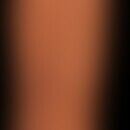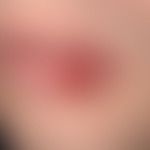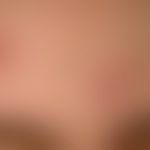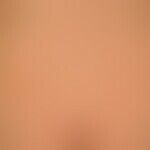Synonym(s)
HistoryThis section has been translated automatically.
Leonicenus (Leonicus), 1497
DefinitionThis section has been translated automatically.
Worldwide, bacterial, sexually transmitted infection with a typical, phasic, chronic course with initial localized to progressive systemic infectious disease.
You might also be interested in
PathogenThis section has been translated automatically.
Treponema pallidum (Spirochaeta pallida), a spirochete that, because of its susceptibility, is transmitted only in warm, moist environments.
Occurrence/EpidemiologyThis section has been translated automatically.
In 2015, the nationwide incidence was 8.5 cases/100,000 population/year. In Berlin, the incidence was 31/100,000 inhabitants, and in Hamburg, 19.7/100,000. In Europe (29 countries), the average incidence in 2014 was 5.1 cases/100,000 inhabitants/year. The lowest incidence was in Italy (0.6/100,000), and the highest in Malta (11.5/100,000 population/year).
The female proportion of reported syphilis cases was 6.2% for Germany.
Syphilis infections are more frequent in men who have sex with men ("men who have sex with men" MSM). The highest growth rates have been recorded in this group in recent years. S.a. Slamming.
Up to 15% of infected persons in Germany suffer from HIV infection at the same time, up to 80% of HIV-infected persons are TPHA-positive (no significant difference in clinical course).
EtiopathogenesisThis section has been translated automatically.
Direct transmission from person to person by smear infection, especially during sexual intercourse. The pathogens enter the organism through microscopic epithelial defects.
Very rare are "non-sexual" accidental transmissions in lesions in the area of the oral mucosa.
Infections through blood transfusion are almost impossible today.
LocalizationThis section has been translated automatically.
Early syphilis (primary effect):
- Genitals: In men the glans, sulcus coronarius and the inner foreskin leaf (see also condom chancre) are mainly affected. In women, large and small labia, clitoris and urethral orifice are affected.
- Extragenital (5%): Occurs mainly perianally, intrarectally, in the mouth, oral cavity, on tonsils, lips, cheek mucous membrane, female nipples. Any part of the body may be affected.
ClinicThis section has been translated automatically.
- Early syphilis (syphilis I and II; syphilis <1 year):
- Syphilis I: incubation period 2-3 weeks. Primary effect: Painless, usually solitary (see also Abklatschschanker), indurated papule of various sizes, which ulcerates very rapidly and changes into a painless, dermal ulcer(Ulcus durum). In about 5% (?) of cases, the primary effect also occurs extragenitally (mainly orally; rarely on fingers or nipples).
- Special form: Oedema indurativum. Primary complex = indolent regional lymphadenitis (bubo) + primary effect.
- Syphilis II: After about 2-3 weeks spontaneous remission of the primary complex. Pat. appear free of appearance during the initial latency period of 4-6 weeks. The stage of generalized spirochetosis begins about 3-8 weeks after the appearance of the primary effect. There are clinical general symptoms such as fatigue, exhaustion, mild fever, sore throat, generalized lymphadenopathy (indolent, displaceable, important sign from a differential diagnostic point of view [DD: lymphatic systemic diseases!]), muscle and joint pain.
- The first visible skin symptoms are usually non-pruritic, often only discrete, pink-colored, macular exanthema with scarless healing(roseolae).
- In the further course, clearly visible, increasingly polymorphous exanthemas appear, which regularly involve the palm and soles (palmoplantar palm/hollow foot syphilid = important differential diagnostic sign of these exanthemas).
- S.a.
- Depigmentation or hyperpigmentation may occur at the site of healed syphilides, see also Leucoderma syphiliticum, collar of Venus (occurring mainly in females).
- Alopecia: see below Alopecia areolaris syphilitica, Alopecia specifica diffusa.
- Extracutaneous manifestations/general condition: fatigue, loss of appetite, slight increase in temperature, myalgias, polyarthritic pain (polyarthritis syphilitica, periostitis syphilitica), mostly nocturnal bone pain (osteocopi nocturni), especially in femur, tibia, humerus, temporal region, sternum, clavicle. Furthermore: nocturnal headache, iritis, nephritis, phlebitides, periphlebitides.
Notice. About 75% of all untreated syphilis cases heal spontaneously after secondary syphilis!
- Syphilis I: incubation period 2-3 weeks. Primary effect: Painless, usually solitary (see also Abklatschschanker), indurated papule of various sizes, which ulcerates very rapidly and changes into a painless, dermal ulcer(Ulcus durum). In about 5% (?) of cases, the primary effect also occurs extragenitally (mainly orally; rarely on fingers or nipples).
- Late syphilis (syphilis III and IV; syphilis > 1 year) see below, Syphilis acquisita Late syphilis:
LaboratoryThis section has been translated automatically.
S.u. Syphilisserology. TPHA test and VDRL test are effective screening tests. Confirmation response: FTA test, FTA-Abs test (gold standard of confirmation test procedures).
HistologyThis section has been translated automatically.
- Early syphilis:
- Primary effect: dense, diffuse, histiocyte-rich mixed infiltrate in all layers of the dermis. Different admixture of eosinophilic granulocytes and especially of plasma cells.
- Syphilitic exanthema: The histological picture varies according to the clinic. Psoriasiform syphilia show the picture of an interface dermatitis with psoriasiform epidermal reaction (irregular acanthosis, spongiosis, focal parakeratosis, apoptotic keratocytes) and an (unusually) dense, band-shaped infiltrate in the upper and middle dermis (lymphocytes, histiocytes and plasma cells (!)). Extension of the infiltrate to the deep vascular plexus. Possible are epitheloid-cellular granulomas, which condense in the late phase of early syphilis.
- Late syphilis (syphilis III + IV, from the end of the 2nd year after infection): Superficial and deep infiltrate. Infiltrate composition as before, but epitheloid cell (tuberculoid) granulomas develop with increasing compression.
DiagnosisThis section has been translated automatically.
- Early syphilis: clinic, pathogen detection by dark field method, syphilisserology (positive 2-3 weeks after the primary effect).
- Late syphilis: ex juvantibus: regression of the changes due to internal iodine administration, previously exclusion of tuberculosis.
Differential diagnosisThis section has been translated automatically.
- Clinical differential diagnosis:
- Primary genital effect: ulcer mostly painless, firm, always regional lymphadenopathy.
- Balanoposthitis chronica circumscripta plasmacellularis: other age group: > 60 years. Soft consistency. Several months of development, no acute occurrence.
- Erythroplasia: other age group (> 60 years). Soft consistency. Flat erosion. Developed over several months, no acute onset.
- Syphilitic exanthema:
- Drug exanthema, maculo-papular: medical history. Rarely infestation of the palms and capillitium. The colour is mostly light red, in case of syphilis brown-red. No lymphadenopathy. Itching may be present.
- Psoriasis vulgaris: Distribution pattern and typical elbow infection exclude syphilis. No oral lesions. No lymphadenopathy. Infestation of the palms is possible.
- Infectious exanthema ( DD): These are to be excluded on the basis of the overall clinical symptoms (acute onset, general symptoms) and specific laboratory tests.
- Pityriasis rosea (most important DD in an early syphilitic exanthema): Primary medallion. No infestation of the palms. Never mucous membrane symptoms. No lymphadenopathy.
- Scabies: mostly prominent itching with scratch excoriations (always absent in syphilis!). Mite duct structures. Infestation of the palms of the hands, especially in young patients, is rare. No lymphadenopathy.
- Histological differential diagnoses:
- Lichen planus: prominent interface dermatitis with pronounced vacuolisation of the basal keratinocytes. No plasma cells.
- Lichenoid drug reaction: mostly marked dermal edema. Often eosinophilia. No plasma cells.
- Mycosis fungoides: typical halo formation around polymorphic lymphocytes. Hardly any plasma cells. Marked epidermotropy with vacuolized epidermis cells. Eosinophilia is possible.
- PLEVA: No histiocytes. No plasma cells.
- Acrodermatitis chronica atrophicans: Atrophy of the epidermis and narrowing of the dermis. Dilated dermal vessels. Numerous plasma cells.
TherapyThis section has been translated automatically.
Therapy of the 1st choice is benzathine penicillin G. Dosage: 2.4 million I.U. i.m. (gluteal left/right per 1.2 million I.U.)
Alternatively: Ceftriaxone 1.0 g/day i.v. over 10 days.
Alternative: Doxycycline 100mg 2x/day p.o. for 14 days.
Alternative: Erythromycin 0,5g 4x/day p.o. over 14 days.
Notice! Occurrence of a Herxheimer reaction (historically exact: Jarisch-Herxheimer reaction) some hours after penicillin administration is possible (about 25-65% of patients)!
For prophylaxis, 25-50 mg prednisolone can be administered one hour before or during the injection of penicillin. Special treatment requirements apply in cases of penicillin intolerance, epilepsy or pregnancy.
Progression/forecastThis section has been translated automatically.
- Early syphilis: Spontaneous healing is possible. Untreated or insufficiently treated, a transition to syphilis III or syphilis IV is possible.
- Late syphilis: lethality in case of infestation of the cardiovascular system 80-90%. Healing of defects, but usually progression to death. Permanent disability or debility.
TablesThis section has been translated automatically.
Therapy of the Syphilis acquisita
|
Active substance |
Example preparation |
Dosage |
Duration |
Early syphilis * 1 |
Benzathine penicillin |
Pendysin |
2.4 million IU i.m. |
1-time application |
For penicillin allergy * |
Doxycycline |
DoxyHexal |
2 times/day 100 mg p.o. or i.v. |
14 days |
Erythromycin |
Erythrocin |
4 times/day 500 mg p.o. |
14 days |
|
| ||||
Late syphilis * 2 |
Benzathine-penicillin as depot injection |
Tardocillin 1200 |
2.4 million IE i.m. |
3 times at intervals of 7 days (day1,8,15) |
Alternatively * |
Doxycycline |
DoxyHexal |
2 times/day 100 mg p.o. or i.v. |
28 days |
Ceftriaxone |
Rocephin |
1.0 g/day i.v. |
14 days |
|
Neurosyphilis * |
Benzylpenicillin sodium |
Penicillin G Jenapharm |
6 times/day 3-4 million IE i.v. alternatively: 10 million IU 3 times/day i.v. |
14-21 days |
Alternatively |
Ceftriaxone |
Rocephin |
2.0 g/day i.m. or i.v.(initial 4.0g) |
14-21 days |
For epileptic seizures due to high dose of penicillin |
Benzylpenicillin-procain/benzylpenicillin sodium |
retacillin compositum |
1.2-2.4 million IU/week i.m. |
7-14 days |
Then: benzathine-penicillin |
3 times/week 2.4 million IU i.m. |
3 weeks |
||
For penicillin allergy |
Doxycycline |
DoxyHexal |
2 times/day 100-200 mg i.v. |
30 days |
Pregnancy |
Benzathine penicillin |
Pendysin |
2.4 million IE i.m. |
1-3 times (at intervals of 1 week) |
For penicillin allergy |
erythromycin 3 |
Erythrocin |
4 times/day 500 mg p.o. |
depending on stage |
Azithromycin |
Zitromax |
once/day 500 mg p.o. |
depending on stage |
|
Ceftriaxone |
Rocephin |
250-1000 mg/day i.v. or i.m. |
depending on stage |
|
LiteratureThis section has been translated automatically.
- Aquilina C et al (2003) Secondary syphilis simulating oral hairy leukoplakia. J Am Acad Dermatol 49: 749-751
- Brown DL et al (2003) Diagnosis and management of syphilis. On Fam Physician 68: 283-290
- Buntin DM et al (1991) Sexually transmitted diseases: Bacterial infections. J Am Acad Dermatol 25: 287-299
- Doherty L et al (2002) Syphilis: old problem, new strategy. BMY 325: 153-156
- Golden MR et al (2003) Update on syphilis: resurgence of an old problem. JAMA 290: 1510-1514
- Harry TC (2002) Infectious syphilis and importance of travel history. Lancet 359: 447-448
- Lee JY, Lee ES et al (2003) Erythema multiforme-like lesions in syphilis. Br J Dermatol 149: 658-660
- Leonicenus N (1497) De morbo gallico. Aldus Manutius, Venice
- Potthoff A et al (2005) Syphilis and HIV infection. Characteristic features of diagnosis, clinical assessment, and treatment. Dermatologist 56: 133-140
- Walker DG, Walker GJ (2002) Forgotten but not gone: the continuing scourge of congenital syphilis. Lancet Infect Dis 2: 432-436
Incoming links (75)
Acne syphilitica; Alopecia areolaris syphilitica; Alopecia specifica diffusa; Ama; Anal fissure; Andrology; Angina, specific; Aortic aneurysm, syphilitic; Balanitis specifica; Behcet, hulusi; ... Show allOutgoing links (45)
Acrodermatitis chronica atrophicans; Alopecia areolaris syphilitica; Alopecia specifica diffusa; Balanitis plasmacellularis; Condom dispenser; Darkfield method; Depigmentation; Drug exanthema maculo-papular; Erythroplasia queyrat; Fta test; ... Show allDisclaimer
Please ask your physician for a reliable diagnosis. This website is only meant as a reference.






















































